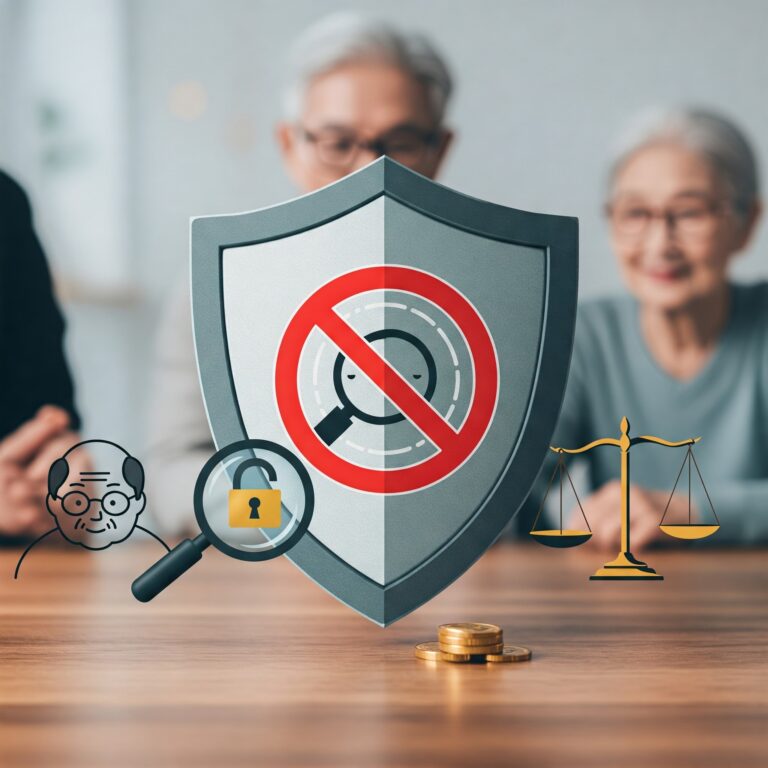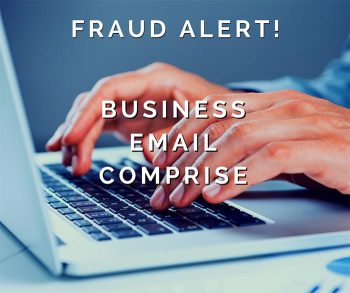In an era defined by rapid technological advancement and increasingly sophisticated methods of deception, the battle against fraud and scams has become more critical than ever. Legislators and regulatory bodies are constantly striving to create and update frameworks to protect citizens from financial exploitation and deceptive practices. Among these efforts, the term “SAVE Act” has emerged, but it’s crucial to understand that this acronym can refer to different pieces of legislation, each addressing distinct, though equally important, societal challenges.
This article delves into the landscape of fraud and scam prevention, focusing primarily on the Fraud and Scam Reduction Act, often referred to as the SAVE Act in discussions related to consumer protection. We will also briefly touch upon the Safeguard American Voter Eligibility (SAVE) Act, a separate piece of legislation focused on election integrity, to clarify potential confusion and provide a comprehensive understanding of the current legislative environment. Understanding these acts is vital for consumers, businesses, and anyone seeking to navigate the complex world of fraud prevention and civic responsibility.
The Fraud and Scam Reduction Act: A Shield Against Deception
The Fraud and Scam Reduction Act, officially titled “Pub. L. No. 117-103, 136 Stat. 49, Division Q, Title I, §§ 101-122”, and enforced by the Federal Trade Commission (FTC), is a significant piece of legislation aimed at bolstering the fight against fraudulent schemes, particularly those preying on vulnerable populations, especially seniors. Signed into law to address the escalating issue of consumer fraud, this act recognizes the devastating impact scams can have on individuals and the economy.
Key Provisions and Objectives:
The Fraud and Scam Reduction Act is multifaceted, establishing key structures and mandates designed to enhance awareness, prevention, and combatting of fraudulent activities. At its core, the Act seeks to:
- Raise Awareness: A central tenet of the Act is to significantly increase public awareness regarding fraud and scams. This includes educating consumers, particularly seniors, about the prevalent types of scams, red flags to watch out for, and resources available for reporting and seeking help. Effective awareness campaigns are crucial in empowering individuals to recognize and avoid falling victim to deceptive schemes.
- Identify and Combat Schemes: Beyond awareness, the Act aims to improve the identification and active combatting of fraudulent schemes. This involves studying existing scams, understanding emerging trends, and developing proactive strategies to disrupt and dismantle these operations. This requires collaboration between government agencies, industry stakeholders, and law enforcement to stay ahead of evolving scam tactics.
- Protect Vulnerable Populations, Especially Seniors: A primary focus of the Fraud and Scam Reduction Act is the protection of seniors. Older adults are often disproportionately targeted by fraudsters due to factors such as accumulated savings, potential cognitive vulnerabilities, and a sense of trust. The Act specifically mandates measures to address scams targeting this demographic, recognizing the particularly devastating financial and emotional impact these schemes can have on seniors.
Establishment of Key Bodies:
To achieve these objectives, the Fraud and Scam Reduction Act establishes two critical bodies:
- Senior Scams Prevention Advisory Group: This advisory group is a cornerstone of the Act, composed of representatives from both government and industry. Its primary task is to meticulously study and upgrade existing educational materials designed to prevent scams targeting seniors. This group serves as a central hub for expertise and collaboration, ensuring that educational resources are relevant, up-to-date, and effectively disseminated to the senior population. The advisory group’s work is crucial in ensuring that prevention efforts are informed by the latest scam trends and best practices in education and outreach.
- Office for the Prevention of Fraud Targeting Seniors: Within the Bureau of Consumer Protection at the FTC, the Act establishes a dedicated Office for the Prevention of Fraud Targeting Seniors. This office is specifically charged with several key responsibilities:
- Oversight of Fraud Targeting Seniors: The office plays a crucial role in monitoring and overseeing the landscape of fraud targeting seniors. This involves tracking trends, analyzing complaint data, and identifying emerging threats to ensure that the FTC’s efforts are focused and effective.
- Coordination with Relevant Agencies: Combating fraud requires a multi-pronged approach. This office is mandated to coordinate with other relevant government agencies, fostering collaboration and information sharing to create a unified front against scams targeting seniors. This inter-agency cooperation is essential for maximizing resources and impact.
- Dissemination of Educational Materials: A core function of the office is to actively disseminate educational materials concerning fraud targeting seniors. This involves developing and distributing resources through various channels to reach seniors where they are, whether online, in community centers, or through trusted intermediaries. Effective dissemination is key to ensuring that awareness campaigns reach the intended audience.
- Logging Complaints of Fraud Targeting Seniors: The office serves as a central point for logging complaints of fraud specifically targeting seniors. This centralized complaint logging system is vital for data collection and analysis, allowing the FTC to identify patterns, track scam trends, and inform enforcement and prevention strategies.
The Urgency of Addressing Senior Scams:
The specific focus on senior scams within the Fraud and Scam Reduction Act underscores the particular vulnerability of older adults to these deceptive practices. Several factors contribute to this vulnerability:
- Accumulated Savings: Seniors often possess accumulated savings and retirement funds, making them attractive targets for fraudsters seeking significant financial gain.
- Cognitive Vulnerabilities: Age-related cognitive decline can sometimes make seniors more susceptible to manipulation and less able to recognize sophisticated scams.
- Social Isolation and Loneliness: Scammers often exploit feelings of loneliness and isolation in seniors, using emotional manipulation to gain trust and extract money.
- Trust and Politeness: Seniors may be more trusting and polite, making them less likely to question authority figures or high-pressure sales tactics employed by scammers.
The consequences of senior scams can be devastating, leading to significant financial losses, emotional distress, and a diminished sense of security and independence. The Fraud and Scam Reduction Act represents a crucial step in acknowledging and addressing this critical issue.
Clarifying the “Other” SAVE Act: Voter Eligibility and Election Integrity
While the Fraud and Scam Reduction Act focuses on consumer protection and combating fraud, it is essential to distinguish it from another piece of legislation that has also been referred to as the “SAVE Act“: the Safeguard American Voter Eligibility (SAVE) Act. This act, primarily discussed in the context of election law and voter registration, addresses a completely different set of concerns.
The Safeguard American Voter Eligibility (SAVE) Act (H.R. 22):
This SAVE Act, often associated with discussions about voter integrity and election security, focuses on ensuring that only eligible citizens participate in federal elections. Its key provisions center around:
- Documentary Proof of Citizenship for Voter Registration: A central component of this act is the requirement for individuals to present documentary proof of U.S. citizenship when registering to vote. Acceptable documents typically include birth certificates, passports, or naturalization certificates. This provision aims to strengthen the verification process and prevent non-citizens from registering to vote.
- In-Person Documentation Requirement: The SAVE Act, in some interpretations, mandates that this documentary proof be presented in person when registering to vote or updating voter registration information. This aspect has raised concerns about potentially eliminating or significantly hindering mail-in and online voter registration options, which are relied upon by millions of Americans.
- Voter Roll Purges: The act also includes provisions related to more frequent voter roll purges, aimed at removing ineligible voters from registration lists. However, concerns have been raised that these purges could be based on faulty data and lead to the erroneous removal of eligible citizens, disenfranchising legitimate voters.
- Penalties for Election Workers: Controversially, the SAVE Act, in certain versions, proposes criminal penalties for election workers who assist in registering individuals without the required documentation, even if the registered voter is a citizen. This has been criticized as potentially deterring election officials from effectively carrying out their duties and hindering voter registration efforts.
Controversy and Concerns Surrounding the Voter Eligibility SAVE Act:
The Safeguard American Voter Eligibility (SAVE) Act has generated significant controversy and opposition, with critics arguing that it would create unnecessary barriers to voting and disproportionately disenfranchise eligible citizens. Key concerns include:
- Disenfranchisement of Millions: Opponents argue that requiring documentary proof of citizenship for voter registration would disenfranchise millions of eligible American citizens who may lack easy access to the required documents. Statistics cited by organizations like the ACLU and the Center for American Progress suggest that over 21 million Americans may not possess readily available proof of citizenship, particularly marginalized communities, people of color, naturalized citizens, young and elderly voters, and individuals with lower incomes.
- Impact on Voter Registration Methods: The in-person documentation requirement is seen as a direct attack on mail-in and online voter registration, methods that have significantly expanded voter access and participation. Eliminating or hindering these options would disproportionately impact voters who rely on these convenient and accessible registration methods.
- Erroneous Voter Purges: Concerns exist that the mandated voter roll purges could lead to the removal of eligible voters based on inaccurate data, mirroring past instances where faulty purges have disenfranchised legitimate voters.
- Undermining Election Administration: The proposed penalties for election workers are seen as unduly burdensome and potentially chilling, discouraging individuals from serving as election officials and hindering voter registration drives.
Distinguishing Between the Two “SAVE Acts”:
It is crucial to recognize that the Fraud and Scam Reduction Act and the Safeguard American Voter Eligibility (SAVE) Act are distinct pieces of legislation addressing entirely different issues. While both may be referred to as “SAVE Act” in certain contexts, their objectives and impacts are vastly different.
- Fraud and Scam Reduction Act: Focuses on consumer protection, combating fraud and scams, particularly those targeting seniors, through awareness, prevention, and enforcement measures. It is generally viewed as a positive step towards protecting vulnerable populations from financial exploitation.
- Safeguard American Voter Eligibility (SAVE) Act: Focuses on election integrity and voter eligibility, aiming to prevent non-citizen voting by requiring documentary proof of citizenship for voter registration. It is highly controversial, with critics arguing it would disenfranchise millions of eligible voters and create unnecessary barriers to democratic participation.
The Broader Fight Against Fraud and Scams in the Digital Age:
Regardless of the specific legislation, the overarching fight against fraud and scams remains a pressing concern in today’s digital age. The internet and technological advancements have created new avenues for fraudulent activities, making scams more sophisticated and widespread.
Current Trends in Fraud and Scams:
- Online Scams: The internet has become a breeding ground for various scams, including phishing emails, fake websites, online shopping fraud, and cryptocurrency scams. These schemes often exploit the anonymity and global reach of the internet to target victims across geographical boundaries.
- Phone Scams: Robocalls and phone scams remain prevalent, with fraudsters using sophisticated techniques to spoof caller IDs and impersonate government agencies or legitimate businesses. These scams often employ high-pressure tactics and emotional manipulation to coerce victims into sending money or providing personal information.
- Social Media Scams: Social media platforms have also become fertile ground for scams, including romance scams, investment scams, and fake giveaways. Scammers leverage social media’s vast user base and personal information to target victims with tailored and convincing schemes.
- Identity Theft: The theft of personal information for fraudulent purposes remains a major concern, with scammers using stolen identities to open credit accounts, file taxes, and access financial resources. Data breaches and online vulnerabilities contribute to the ongoing threat of identity theft.
- Cryptocurrency Scams: The rise of cryptocurrencies has created new opportunities for fraud, with scams ranging from Ponzi schemes and rug pulls to fake cryptocurrency exchanges and investment opportunities. The decentralized and often unregulated nature of cryptocurrency markets can make it challenging to recover losses from these scams.
The Importance of Consumer Education and Awareness:
In this evolving landscape of fraud and scams, consumer education and awareness are paramount. Empowering individuals with the knowledge and tools to recognize and avoid scams is the first line of defense. Key aspects of consumer education include:
- Recognizing Red Flags: Educating consumers about common red flags associated with scams, such as unsolicited requests for money, high-pressure tactics, requests for personal information, and promises of unrealistic returns.
- Staying Informed about Scam Trends: Keeping consumers informed about the latest scam trends and tactics through public awareness campaigns, media coverage, and educational resources from organizations like the FTC and consumer protection agencies.
- Utilizing Available Resources: Promoting awareness of resources available to consumers who have been targeted by scams, including reporting mechanisms to the FTC and law enforcement, and support services for victims of fraud.
- Promoting Critical Thinking and Skepticism: Encouraging consumers to adopt a critical and skeptical mindset when encountering unfamiliar requests or offers, especially those involving financial transactions or personal information.
A Multi-Front Battle Against Deception
The fight against fraud and scams is a continuous and evolving battle that requires a multi-faceted approach. Legislative efforts like the Fraud and Scam Reduction Act are crucial in establishing frameworks for prevention, enforcement, and victim support. However, legislation alone is not sufficient. Effective consumer education, industry collaboration, and technological advancements in fraud detection and prevention are equally vital in mitigating the impact of these deceptive practices.
While the Safeguard American Voter Eligibility (SAVE) Act addresses a separate, yet important, aspect of civic responsibility – election integrity – it is essential to distinguish it from the consumer protection focus of the Fraud and Scam Reduction Act. Both “SAVE Acts” highlight the ongoing efforts to safeguard critical aspects of society, whether it be protecting citizens from financial exploitation or ensuring the integrity of democratic processes.
Ultimately, a comprehensive approach that combines legislative action, public awareness, and technological innovation is essential to navigate the murky waters of deception and protect individuals and society from the pervasive threat of fraud and scams in the 21st century and beyond. Staying informed, vigilant, and proactive is the best defense in this ongoing battle.















